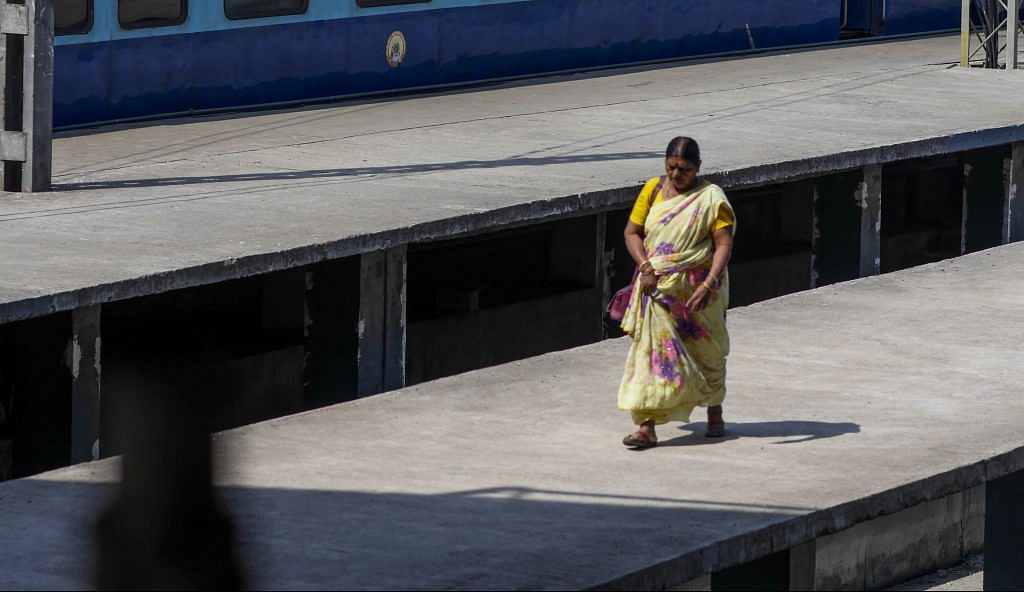Experts caution against study by Thomson Reuters Foundation, call it a ‘superficial survey’, say systematic studies would be better.
New Delhi: The survey dominated the news cycle and social media discussions for much of Tuesday and even Wednesday morning – India had emerged as the most dangerous place for women among the 193 United Nations member states.
However, while few would question that India is among the most unsafe places for women, given rampant sexual violence and patriarchy, the study riled domain experts with its “flawed” methodology that placed the nation behind such countries as Somalia, where the United Nations estimates the prevalence of female genital mutilation at 95 per cent and child rapists are reportedly let off with light sentences, and Syria, where a civil war has now been under way for seven years.
https://www.youtube.com/watch?v=xKtQUfWCjt4&feature=youtu.be
India has been ranked behind Afghanistan, where NGO Global Rights estimated in 2015 that nine in 10 women suffered physical, sexual or psychological violence, or are forced into marriage, and Saudi Arabia, where the male guardianship system severely restricts women’s lives and sexual harassment was outlawed just last month.
Carried out and published by the Thomson Reuters Foundation, the philanthropic arm of the news agency, the survey was based on replies to a questionnaire from over 500 domain experts. They have also questioned the validity of the report, given the seemingly flawed methodology employed.
“I would be very careful about scienticising or psychologising these tools. They sound more like advertising gambits than serious social science studies,” said Shiv Visvanathan, a sociologist and professor at Jindal Global Law School.
“India doesn’t face the kind of situation many of these war-torn countries are facing. What we have is a greater variety of violence rather than a greater intensity of violence and I think somewhere this report is confusing the two. I would be very wary of these polls, I’d go for more systematic studies,” he added.
In order to establish their findings the agency reached out to 759 experts on women’s issues across the globe between 26 March and 4 May. They received 548 responses. The questionnaire sent out dealt with six parameters: Healthcare, discrimination, cultural traditions, sexual violence non-sexual violence and human trafficking.
- Health: Including maternal mortality, lack of access to healthcare, lack of control over reproductive health and HIV/AIDS
- Discrimination: Including job discrimination, inability to make a livelihood, discriminatory land, property or inheritance rights, lack of access to education and lack of access to adequate nutrition
- Culture & Religion: Including acid attacks, female genital mutilation, child marriage, forced marriage, punishment/retribution through stoning or physical abuse or mutilation and female infanticide/foeticide
- Sexual Violence: Including rape as a weapon of war; domestic rape; rape by a stranger; the lack of access to justice in rape cases; sexual harassment and coercion into sex as a form of corruption.
- Non-Sexual Violence: Including conflict-related violence and forms of domestic physical and mental abuse
- Human trafficking: Domestic servitude, forced labour, bonded labour, forced marriage and sexual slavery.
“If people are simply going to judge countries on the basis of not having visited them, it is possible that countries where there is not much media reportage… don’t really figure in the map of people who are looking at violence against women. This is obviously a very superficial survey,” said Nivedita Menon, a feminist scholar and professor at Delhi’s Jawaharlal Nehru University.
She also questioned why the US, ranked 10th, was so low on the list.
“The same nationalist thinking is at play to protect America, that it wouldn’t have been on the list at all had it not been for hundreds of women shouting their heads off. It is a very glib assumption to make, because America is famously unsafe for women and the #MeToo and TimesUp movements have called attention to a real problem,” she added.
While ranked 10th overall, the US tied third with Syria on sexual violence.
However, Saumya Saxena, a consultant to the Law Commission of India and women’s rights activist, was wary of the criticism, saying the content of the poll was of more importance than its methodology.
“Crime against women in India is a serious issue and India needs no comparative data to confirm the magnitude of the problem,” she told ThePrint.
“While we might not know who voted in this poll and how reliable the source might be, our response to such news cannot simply be to question the methodology and end the debate,” she added.
A similar report by the World Economic Forum detailed India’s nosedive from the 87th to the 108th position on its forum’s Global Gender Gap Index. However, compared to the Reuters poll, which relied on the opinion of domain experts, the WEF included publicly available ‘hard data’ indicators from international organisations like the International Labour Organization, the United Nations Development Programme, and the World Health Organization.
